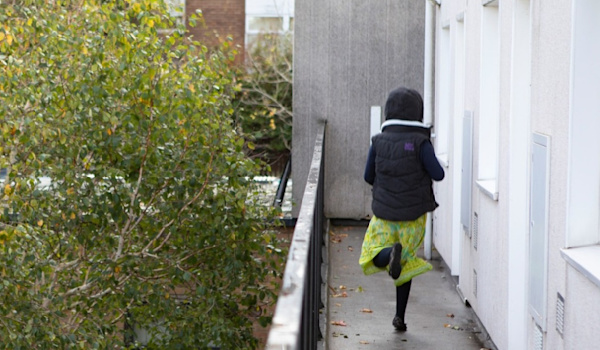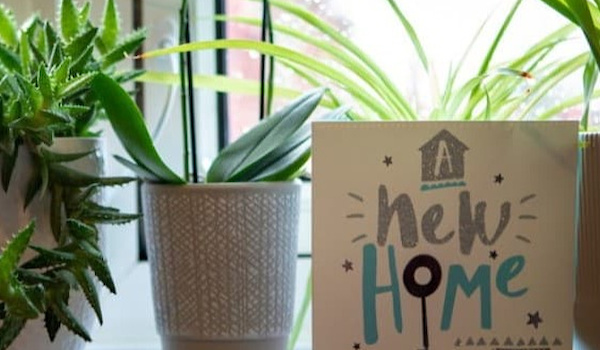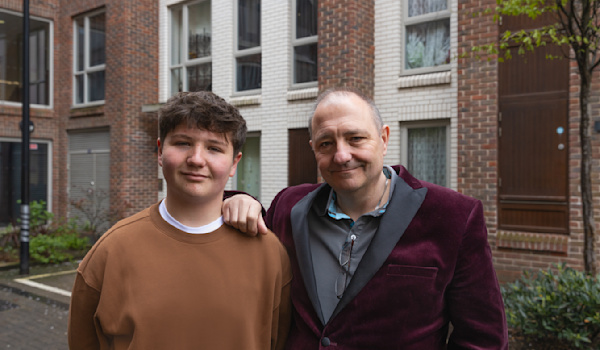What is social housing?
By social housing we mean social rent homes. These homes have rents linked to local incomes and provide a truly affordable, secure housing option for people across the country. We don’t mean affordable rent, shared ownership, or any other so-called ‘affordable’ tenure.
It's genuinely affordable
Social rent homes have rents set by a formula tied to local incomes. Historically, social rents have been around 50% of the market rate. This rent formula is controlled by central government and increases are limited by government policy.It's secure
Tenancies are generally more secure than those in the private rented sector, meaning a social rent home is a permanent home.It's stable
It enables people to put down roots and thrive within a community.Most people on social housing waiting lists need a social rent home.
Who provides it?
Social housing is provided by either housing associations (not-for-profit organisations that own, let, and manage rented housing) or the local council. The term 'council housing' is commonly used interchangeably with 'social housing'. However, technically, it refers specifically to council-owned or council-built housing - that may not always be for social rent.
As a social tenant, you rent your home from the housing association or council, who act as the landlord.
What is its purpose?
The original purpose of social housing was to provide people with the stability of a decent, safe, secure and genuinely affordable home. In the 1960s - the golden era of social housebuilding - nearly a third of households lived in social housing. People from all walks of society could be sure that, if they needed it, they could get a decent, permanent home that they could afford.
I have friendly let-and-let-live neighbours in a quiet place surrounded by green lawns with a field out the back.
- Monica, who lives in social housing
What does it look like?
Social housing isn’t limited to any one sort of building or style. Anything built earlier in the century tends to be older-style buildings, whilst the few ‘new builds’ delivered more recently could look like any other modern home or building.
Pictured: different styles of social rent homes in England


Do you need housing advice?
Find out how to apply for social housing (often called council housing)
Explore Easy Read advice on housing
The problem we're facing
Social rent homes are the only genuinely affordable type of home because their rents are set by a formula tied to local incomes. On average, the weekly rent for a genuine social home is around £89 compared to £196 for private renters – around half the cost.
We see too little investment in social rent homes because funding and policy have been directed at less affordable tenures. Only 11,400 social rent homes were delivered last year, and 23,000 were lost due to sales, demolitions and the conversion of long-term empty homes.
Let's break this down
The term social housing has been legally broadened to include homes many people cannot afford, such as affordable rent and even low-cost ownership products. Although ‘affordable’ and ‘social’ housing are often used interchangeably, Shelter’s fight for social housing is a fight for social rent homes.
The Government’s Affordable Homes programme provides grant funding to support the development of both affordable and social homes. This programme includes social rent, affordable rent, and affordable homeownership.
Affordable Rent
This was introduced in 2011. Affordable Rent homes are let at up to 80% of private rent.Affordable homeownership
Also known as low-cost ownership, this option is for households seeking to own their own homes but are priced out of the market. Low-cost ownership options include shared ownership and First Homes. However, these still require a deposit many low-income families cannot afford.
Unfortunately, these other so-called ‘affordable’ housing types receive most of the limited budget and resources. However, when rents can cost up to 80% of private rents, the reality is that they aren’t that affordable at all.
Because of these significantly less affordable tenures, only 15% of all grant-funded affordable homes built last year were social rent homes. Similarly, when councils require developers to build affordable housing, any of these types of homes can be requested. As a result, in 20222/2023, developers built only 3,500 social rent homes.
This is the reason there are 1.3 million households on social housing waitlists. It's the reason homelessness is at a record high in England right now, with over 164,040 children stuck homeless in damaging temporary accommodation (a record high).
The solution is clear: we need the government to act fast. Put the focus back on social rent and build the decent and genuinely affordable homes this country desperately needs.
To end the housing emergency, the government must invest in a new generation of social housing.
Join our campaignTake further action
Email your MP
By holding your parliamentary representatives accountable, you're helping to strengthen our campaign for investment in a new generation of social rent homes.
Share your story
We think it's time society valued social housing again and your personal stories help us show that value and make the government listen.
Help fund our campaigns
Our campaigning activity is powered by your generous donations and we can't do it without you. Give today to boost our chance of success.
More about social housing

Loss of social housing

The story of social housing


